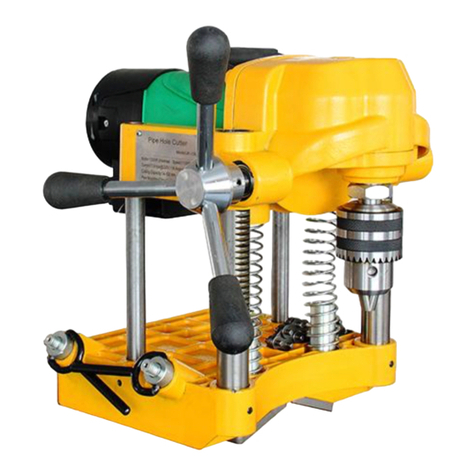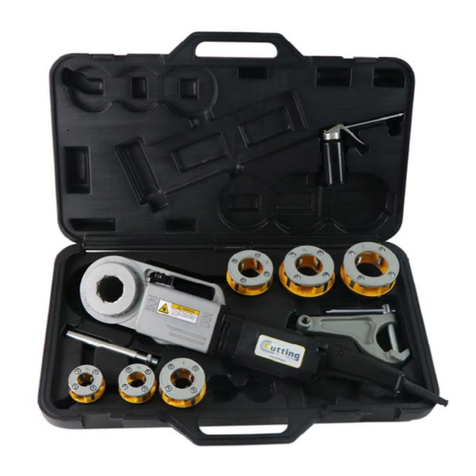
General Safety Information
WARNING! Read and understand all instructions. Failure to follow all instructions listed below
may result in electric shock, fire, and/or serious personal injury.
Work Area Safety
• Keep your work area clean and well lit. Cluttered benches and dark areas invite accidents.
Do not operate power tools in explosive atmospheres, such as in the presence of flammable
liquids, gases, or dust. Tools create sparks which may ignite the dust or fumes.
• Keep bystanders, children, and visitors away while operating a tool. Distractions can cause
you to lose control.
• Keep floors dry and free of slippery materials such as oil. Slippery floors invite accidents.
• Guard or barricade the area when work piece extends beyond machine. A guard or
barricade that provides a minimum of three (3) feet clearance around the work piece will
reduce the risk of entanglement.
Electrical Safety
• Grounded tools must be plugged into an outlet, properly installed and grounded in
accordance with all codes and ordinances. Never remove the grounding prong or modify the
plug in any way. Do not use any adapter plugs. Check with a qualified electrician if you are in
doubt as to whether the outlet is properly grounded. If the tool should electrically malfunction
or break down, grounding provides a low resistance path to carry electricity away from the
user.
• Avoid body contact with grounded surfaces. There is an increased risk of electrical shock if
your body is grounded.
• Don’t expose electrical tools to rain or wet conditions. Water entering a tool will increase the
risk of electrical shock.
• Do not abuse cord. Never use the cord to carry the tools or pull the plug from an outlet. Keep
cord away from heat, oil, sharp edges or moving parts. Replace damaged cords immediately.
Damaged cords increase the risk of electrical shock.
• Use only three-wire extension cords which have three-prong grounding plugs and three-pole
receptacles which accept the tool’s plug. Use of other extension cords will not ground the tool
and increase the risk of electrical shock.
• Keep all electric connections dry and off the ground. Do not touch plugs or tool with wet
hands. Reduces the risk of electrical shock.
Personal Safety
• Stay alert, watch what you are doing and use common sense when operating a power tool.
Do not use tool while tired or under the influence of drugs, alcohol, or medications. A moment
of inattention while operating power tools may result in serious personal injury.
• Dress properly. Do not wear loose clothing or jewelry. Contain long hair. Keep your hair,




























